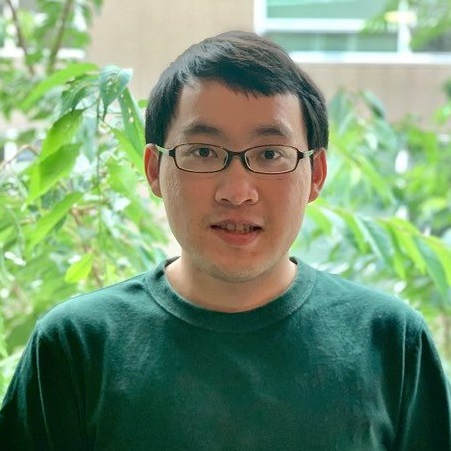Ashlyn Kamin
Examples of electrically conductive metal–organic frameworks (MOFs) are rare, yet they show incredible promise for applications in electrocatalysis, advanced energy storage, and chemical sensing. My research focuses on combining the high conductivity, tunability, and porosity of these MOFs with the solution-processability of liquid crystals. To do this, we synthesize planar, π–d conjugated macrocycles that are equivalent to a single hexagonal pore in a conductive MOF. By simultaneously tuning the macrocycle’s core and periphery, we hope to stabilize liquid-crystalline phases that preserve the extremely high through-space conductivity (from π-π stacking) whilst introducing fluidity and stimuli-responsiveness. Advisor: Dianne Xiao - Chemistry...
Micaela Homer
Photocatalysis is valuable to clean energy research because it allows the storage of solar energy in stable, energy dense chemical bonds. Solution processability and ease of chemical modification make semiconductor nanostructures ideal candidates for applications in photoredox catalysis. The rate of charge transfer is an important benchmark in evaluating such a system. Spectroscopic measurements of charge transfer (picoseconds) are incommensurate with the timescale of typical photocatalytic reactions (minutes). Electrochemical experiments will be an attractive alternative for screening of photocatalytic systems when coupled with electrochemical modeling. Advisor: Brandi Cossairt - Chemistry...
Matthew Golder
Research in the Golder lab is centered around the creation of cutting-edge organic materials. We are interested in new synthetic methodologies that enable the design of large macrocycles with potential utility in organic electronics and gas transport. We ultimately design catalysts and then study their application in the development of conjugated cyclic polymers and other novel porous polymeric materials....
Jiaying Yang
Electrocatalytic conversion of CO2 into useful chemical resources is a compelling strategy to mitigate the effects of climate change, but accomplishing this goal requires the development of next-generation catalysts. Highly selective homogeneous catalysts suffer from low stability, while robust heterogeneous catalyst cannot be easily tuned for selectivity. Immobilization of molecular catalysts on heterogeneous supports provides more robust catalytic systems with high selectivity and activity. Through my research, I will investigate the surface functionalization of phosphorene, a two-dimensional phosphorous analogue of graphene with a thickness dependent bandgap. The support was chosen because it can be viewed as a solid-state phosphine ligand poised to coordinate to transition metal...
Lixin Lu
Doped metal-halide perovskites CsPbX3 (X=Cl, Br or I) nanocrystals (NCs), which combine the desirable broadband absorptive properties of perovskite semiconductors with the richly tunable color emission profiles of sensitized metal ion dopants, have a great potential in the application of high-efficiency solar cells, LEDs, and lasers. Successful doping of various trivalent lanthanide ions (or rare earth ions, RE) into colloidal perovskite NCs has been recently reported. For example, ytterbium (Yb3+)-doped CsPbX3 exhibits over 100% photoluminescence quantum yields (PLQY) as a result of picosecond quantum cutting process, indicating its opportunities to serve as downconverters in solar-energy-conversion technologies. Despite of the experimental evidence, the electronic structural...
Leo Zasada
My research focuses on new, advanced materials for efficient energy storage and electrocatalysis. Specifically, I will synthesize liquid crystalline metal–organic macrocycles that combine the porosity, chemical tunability, and high conductivity of 2D metal–organic frameworks (MOFs) with the solution-processability, self-healing, and stimuli-responsiveness of liquid crystals. 2D MOFs are generally isolated as microcrystalline powders, leading to poor electron transport across grain boundaries. In contrast, liquid crystals are solution processable and can be macroscopically aligned, eliminating this issue. I have synthesized tetrahydroxytriphenylene ligands that should bind to square planar M(II) cations to form hexagonal macrocycles. The desired macrocycle features a π–d conjugated core that should facilitate rapid charge...
Kelly Walsh
Nanoplatelets are one-dimensionally quantum confined nanomaterials that give rise to anisotropic optical properties, including highly directional emission. This feature can lead to greater out-coupling efficiency when interfaced to create devices such as LEDs and lasers, ultimately decreasing their energy consumption. Despite their high research interest, the fundamental properties of these materials are not well understood. My research will involve investigating the spin dynamics and photophysics of CdSe nanoplatelets, including magnetically-shelled nanoplatelets. Specifically, I will focus on magnetic circular dichroism, time-resolved Faraday rotation, and temperature-dependent photoluminescence spectroscopies to investigate the magneto-optical properties of this material. This project will help to advance next-generation optical and spin-based devices. Advisor:...
Margherita Taddei
Today, one of the most pressing issues for our society is to meet the constant increase in energy demand with sustainable alternatives. For this reason, scientists are looking for clean and renewable energy sources. In the solar energy field, perovskite solar cells (PSCs) have attracted a lot of attention due to their incredible increase in efficiency from 3.8% to 25.2% in only 10 years of research. The main issues encountered in PSCs are the presence of toxic cations, low efficiency, and stability. Therefore, for future commercialization, it is necessary to develop eco-friendly, stable, and efficient perovskite materials. My work focus on finding new solution-processable environmentally-friendly...
Florence Dou
The world’s current energy demands are primarily met through fossil fuels. The consumption of this finite fuel source leads to emissions that are extraordinarily harmful for the environment. Solar energy presents itself as a renewable source that can be harvested by state-of-the-art photocatalysts and converted to chemical energy in a clean fashion. Specifically, semiconductor quantum dots synthesized from earth-abundant elements can be utilized as efficient photocatalysts due to their easily tunable redox potentials. My research will focus on using quantum dots as photocatalysts in the selective synthesis of organic compounds, such as hydrocarbon fuels and pharmaceutical drugs. I will also study the functionalization of...
Emerson Chen
I will focus on organic mixed ionic-electronic conductors (OMIECs), which are often soft polymers or polymer blends with conjugated structure. They are promising candidates for supercapacitor and battery electrodes as they have great ionic-electronic coupling property and decent capability of ion and electron transportation. Also, the fabrication could be easily scaled up using roll-to-roll printing as most OMIECs are solution processable. In specific, I will synthesize PEDOT or Polythiophene with carboxybetaine/sulfobetaine zwitterionic side chains via chemical polymerization. EIS and OECT will be applied to characterize the synthesized materials for capacitance and kinetics studies. Higher specific capacitance and charging rate are expected as the zwitterion...
Muammer Yaman
My research involves the synthesis of hierarchical inorganic materials by designing programmable macromolecular building blocks like proteins, polymers. Advisor: David Ginger — Chemistry ...
Liam Wrigley
My research will focus on designing new photocatalytic molecules for the purposes of clean energy generation. Advisor: Cody Schlenker - Chemistry ...














